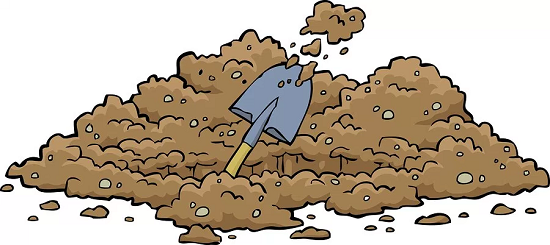Earlier this week I talked about how I tried keeping all my e-mail in my inbox for a year. If you haven’t read it, I would highly advise checking it out, for context if nothing else. The short story was that I found that after a year of keeping my email in one spot it because completely unorganizable and I had a hard time functioning. The trick then became that I had to get back to where I was before, where I had all my e-mails sorted and organized. The issue was that there were so many emails it was tricky to know where to start. Eventually (and with a little trial and error I must admit) I was able to come up with five different things you can do to get started if you find yourself buried under e-mail.
1) Organized by sender – One of the lovely things about most email clients is that they will typically have a function where you can hold all the email you have in one folder (in this case our inboxes) by the person who sent the e-mail. For me, this made it a bit easier because there was a relatively small amount of people who would email me regularly. This meant that when I scrolled through the list of sorted names, the ones who emailed me the most have the most extended list of e-mails. If you find that there is a large group of e-mails from the same person, then the easiest way to file them would be to select the grouping and put the emails in their file. When this person e-mails you again, you can continue to set the emails in that folder. Filing e-mails by sender have the added benefit of knowing where the emails are located in case that person asks you about an email they send you previously.
2) Picked off “the little ones” first – I found that one of the biggest things that I saw (ironically) was the vast number of one-off e-mails that were in my inbox. Whether this was people, who emailed me once about something and never e-mailed me again. The number of these that were either sales e-mails or other junk I wasn’t interested in was surprising, but it also made it easy to get rid of.
3) Chunked out the “by subject” stuff – For sure there are some e-mail chains that you want to be able to keep together, so making sure that you sort out your e-mails by subject matter can be a huge help. Also, because you’re sorting out by the subject, you can save any important e-mail conversations that you may have had with other people.
4) Tossed general e-mail in
5) I worked at it in small chunks – When I first started, I realized quickly that I wouldn’t be able to organize all my e-mails in one afternoon. Part of this was because, quite frankly, I had a job to do. The other reason was that experiencing organizational fatigue can be a serious demotivator. If you get tired of sorting through your e-mail, you may not go back to it for a while. The problem here is that the relentless march of e-mail will continue to flood your inbox. It’s important to work to at it every day but not to work at it too hard.
It took about three months, but it got to the point that I was able to look at my inbox and it was empty. It was such a big deal for me because after trying something new, and realising there was a better way, I was able to correct my mistake and move on. It’s always important to try new things, so for me to try this was important. Once I realized that it no longer worked, I was able to correct it.
How do you file your e-mails?
Let me know in the comments section below. If you like this blog post and want to see more, you can follow me on Social Media (LinkedIn, Instagram, and Facebook @jasonlovefiles) or Subscribe to my blog to get new content delivered directly to your mailbox.


Tulisan yang menarik, terima kasih atas berbaginya. Salam dari IDProperti.com | Pasang Iklan Properti Gratis
Thanks for making complex ideas easy to understand Pasang Iklan Properti Gratis
🙏 Mohon bantuan dari hati yang baik 🙏
Keluarga kami sedang melalui masa yang sangat sukar.
Sumbangan kecil anda, walaupun RM1, sangat bermakna ❤️
📲 Scan QR dalam gambar untuk sumbangan melalui TNG eWallet
Terima kasih kerana prihatin.
🙏 We humbly ask for your kindness 🙏
Our family is going through a very difficult time.
Even RM1 can make a big difference ❤️
📲 Please scan the QR in the image to donate via TNG eWallet
Thank you for your compassion.